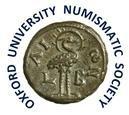(Week 1) Tuesday 16th January
'Trade v. raid revisited: how did coins reach Scandinavia in the later Viking age?' - Dr Elina Screen, Lecturer in Medieval History, University College and Trinity College, University of Oxford.
Abstract The Vikings are best known as raiders who intermittently plundered Western Europe from the ninth century to the eleventh century. From the 990s, King Æthelred the Unready (978-1016) of England was also paying off raiding armies with increasingly large sums of money. The tens of thousands of Anglo-Saxon coins in the Scandinavian hoards deposited c. 980-1050 were thus traditionally explained as the results of Viking plunder and English tribute payments. But the Vikings hardly ever raided Germany, and the Scandinavian hoards contain more German coins. In the light of these massive imports of German coins and also the earlier waves of Islamic dirhams, since the 1980s trade has increasingly been suggested as a key means by which coins (including Anglo-Saxon coins) reached Scandinavia. Working out how things may have got from A to B is a familiar archaeological problem. We know where our coins started and ended their lives, but how did they travel from one country to the other? My work has focused on the Anglo-Saxon coins in particular. The specific characteristics of this closely datable, mint-signed coinage give us additional numismatic tools to approach these questions. Analysing the composition of hoards and how Scandinavians used their coins helps suggest some possible answers to this old conundrum.
(Week 3) Tuesday 30th January
'Missing the bus, plagiarism and failure: the early coin collections in Oxford during the 17th century' - Dr Andrew Burnett, President of the Royal Numismatic Society.
Abstract Collecting and studying coins got going in England in the 16th century, and there was a sizeable group of scholars with an interest and collections in Cambridge. Nothing at Oxford, though, until well into the next century. Bishops and Archbishops then got Oxford started, but Chancellor Laud was to commit a spectacular act of plagiarism in founding the Bodleian collection. Towards the end of the century Elias Ashmole - at heart surely a numismatist, though probably not a very pleasant one - founded his museum with a pathetic coin collection, and proceeded to bully his friends into helping, but after his death it all petered out in failure. We had to wait 200 years, till the late 19th century and Arthur Evans, to make it the success it is today.
(Week 5) Tuesday 13th February
Annual General Meeting
'Bimetallism and Empire in Persian Anatolia' - Dr Aneurin Ellis-Evans, Lecturer in Ancient History, Brasenose College and St Anne’s College, University of Oxford.
Abstract For leading economists of the first half of the 20th century such as John Maynard Keynes, the bimetallic currency system of the Persian Empire was a subject of considerable perplexity Keynes knew from the failures of bimetallic currency systems in France and the United States during the 19th century just how difficult it was to maintain the fixed exchange rate between gold and silver which underpinned a bimetallic currency system when ratios in neighbouring regions changed. Yet, according to Greek numismatists, this is precisely what Persia achieved in its far western territories for over two centuries between the conquest of Anatolia in the 540s and its loss to Alexander in 334. To this day, the orthodoxy is that Persia maintained a silver/gold exchange rate of 13 1/3:1 throughout this period despite downward fluctuations in neighbouring Greece from 14:1 at the beginning of the Peloponnesian War, to 12:1 by the war’s end, and finally down to 10:1 by the time Philip II issued his gold coinage in the 350s. This paper draws on new evidence to show that the silver/gold exchange rate in Persian Asia Minor did in fact fluctuate downward across this period in parallel with the changes we see in neighbouring Greece. With the source of Keynes’ perplexity now resolved, we can look at the numismatic evidence from Persian Asia Minor with fresh eyes and reconsider what it tells us about Persian imperialism and the economy of Asia Minor under Persian rule.
(Week 7) Saturday 3rd March
'Holism and the Ancient World: Combined Approaches in Archaeology, Numismatics, and Beyond': Oxford University Numismatic Society and Oxford University Archaeological Society Student Conference.
Papers:
'Livia and Octavia: Power and Independence. A Holistic Approach' - Blagovesta Atanassova (Lincoln College, Oxford)
'Explaining the sixth century collapse; or, how not to use interdisciplinary approaches' - Arsen Nisenyen (Balliol College, Oxford)
'Reconsidering Greek Space in Pausanias' - Maria Kovalchuk (University of Pennsylvania)
'The Popularity of Tyrants: An Interdisciplinary Analysis' - Davide Morassi (Brasenose College, Oxford)
'Ai Khanoum: Navigating the Ideologies of the Hellenistic World' - Paula Gaither (Christ Church, Oxford)
'An Earl’s Prerogative: Numismatics, Archaeology and Aristocracy in Eighteenth Century England' - Joseph Robson (Lady Margaret Hall, Oxford)
'Myth, Legend, and Legitimacy: Reconstructing the Mythological Panels of the Ara Pacis and the Perpetuation of Augustan Power' - Dessa Meehan (Kellogg College, Oxford)
List of site pages



